It can be scary getting older. Not because of the wrinkles or gray hair, or even the knee and hip pain. I’m talking about the furniture. For anyone facing a mobility issue, interior design choices range from grim to nonexistent. And while public spaces (and even websites) have to comply with the Americans With Disabilities Act (ADA) by law, no such rules govern or guide domestic furniture design.
Meanwhile, a fall at home can be disastrous. One in four people over 65 fall at home each year—which will cost an estimated $100 billion annually in medical treatment by 2030. There’s a grand disconnect from the realities of our lives and the aspirations offered in design magazines.

But in a major move, Pottery Barn will be updating its three most popular lines of furniture—that’s Cayman, Sausalito, and Farmhouse for the non-Barners out there—with a set of optional, accessible features that are almost impossible to spot with the untrained eye, and could swap right into someone’s existing collection without clashing.
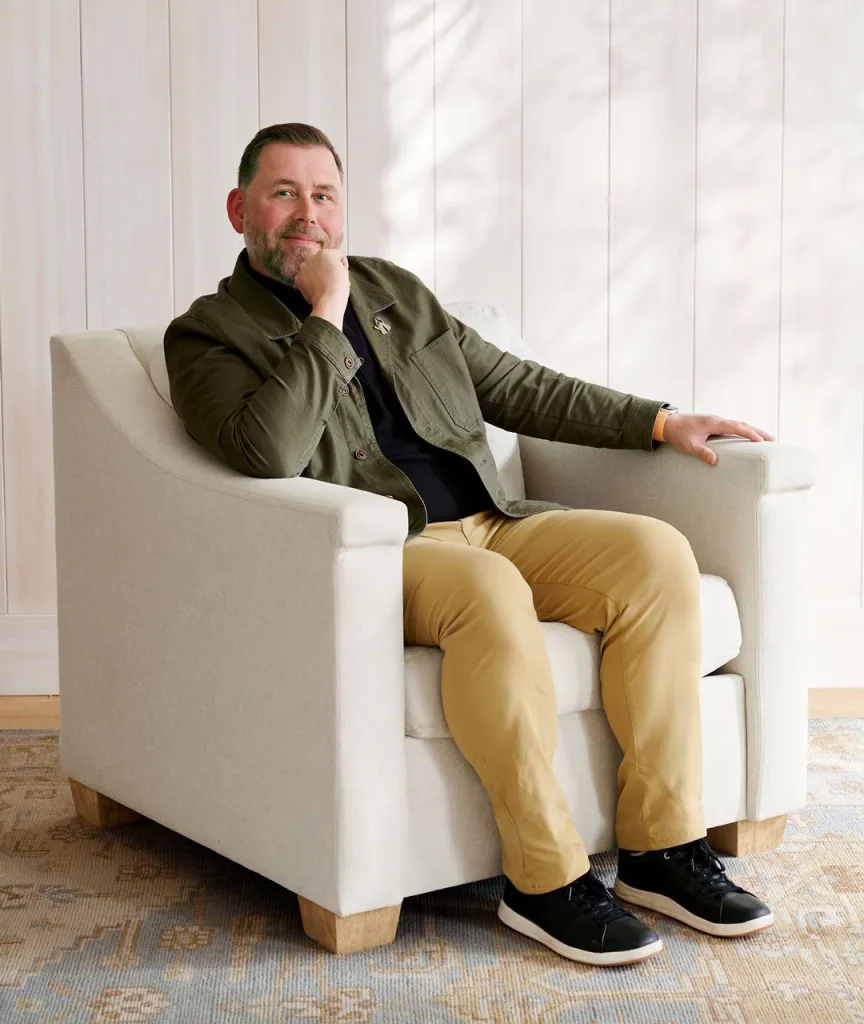
“Why come up with a whole new thing?” says Rob Van Varick of Michael Graves Architecture & Design (MGA&D), which designed the updates. “Let’s take the things that people already love and make them better—that’s really where the brief started.”
In 2022, MGA&D launched a line of thoughtfully designed, good-looking commodes and canes for CVS (read our more extended profile on that work here). Michael Graves was an architect by trade who in the ’90s was key to democratizing design through a landmark product partnership with Target. After illness in 2003 made him a wheelchair user, Graves’s firm spent the next two decades studying disability and designing accessible products that don’t advertise themselves as such. But only in recent years has much of that work and research gone to market.
“We’ve sort of coined it as ‘quietly accessible,’” says Van Varick of the approach.
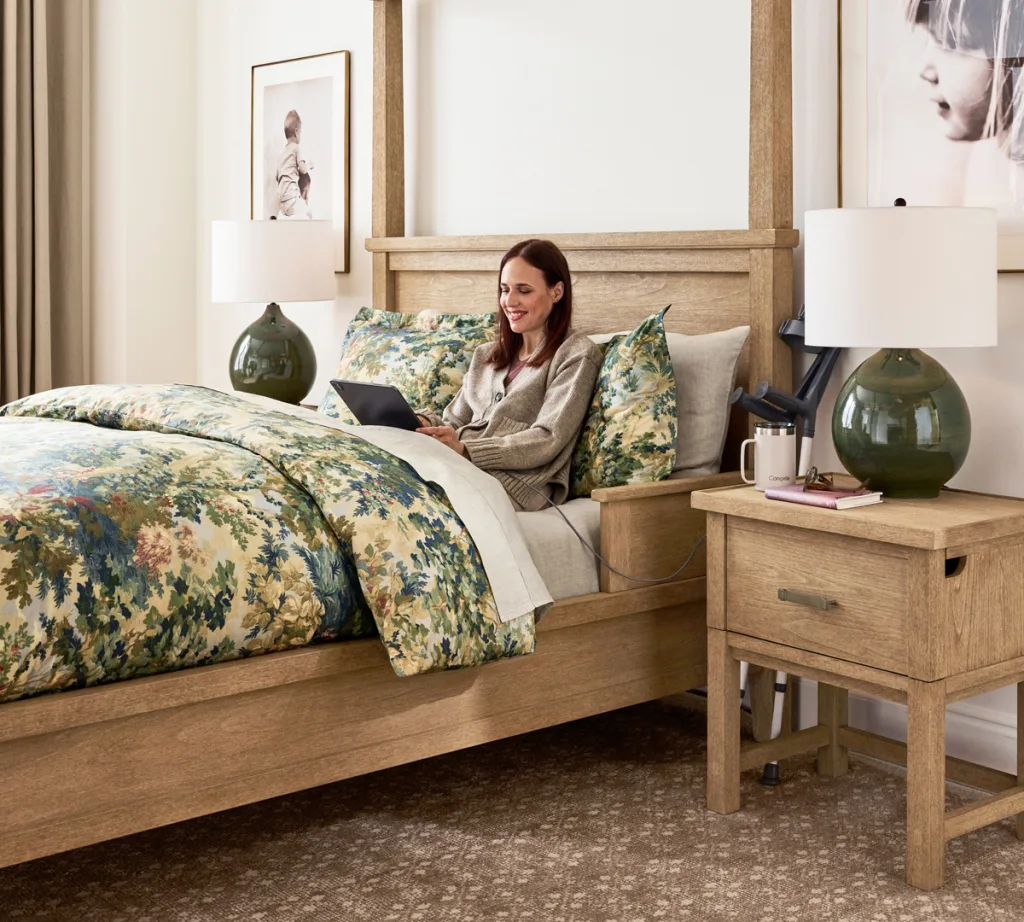
Accessible design for everyone
In the case of the Michael Graves x Pottery Barn collection, available August 1, the team wasn’t simply considering wheelchair- or walker-using customers. “We’re looking at people who might have a temporary disability, people who might have a situational disability, and people who are more just pragmatic planners,” Van Varick says. So the pieces were created and then tested with dozens of potential customers, from wheelchair users to people recovering from hip surgery to women in late-stage pregnancy. Even if you’re not dealing with mobility issues, MGA&D promises there’s a feature you’ll like in the updates.
“I think you’re going to see [accessibility] everywhere over the coming years. It’s just going to become a cost of entry, and it’s going to be part of your everyday life,” Van Varick says. The designers believe people will start to notice when something isn’t accessible, the way we might notice a pre-ADA building. “And you’re like, why is it so claustrophobic in here? Why are these doorways so narrow?’”
Here’s a look at the updates one by one.
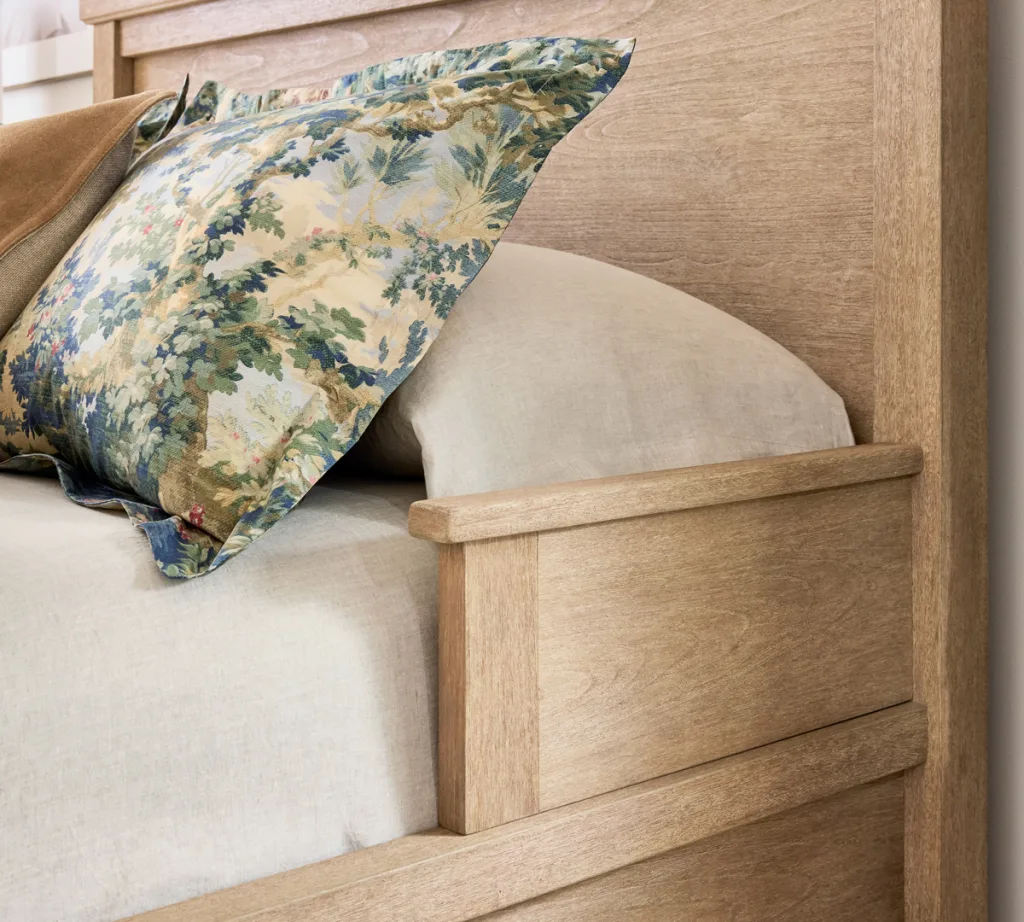
A bed with armrests
Turning and rising in bed can be difficult, so many people add assistive bed rails that fit under their mattress or mount to the frame. Pottery Barn is offering a smaller take on the idea: an armrest that connects to the headboard. It has a rounded top that’s easy to grip, so you can pull it to roll over. It also adds leverage when sitting up or standing out of bed.
To ensure it’s not obtrusive or blocking access to your bed, the armrest juts out no farther than your pillow.
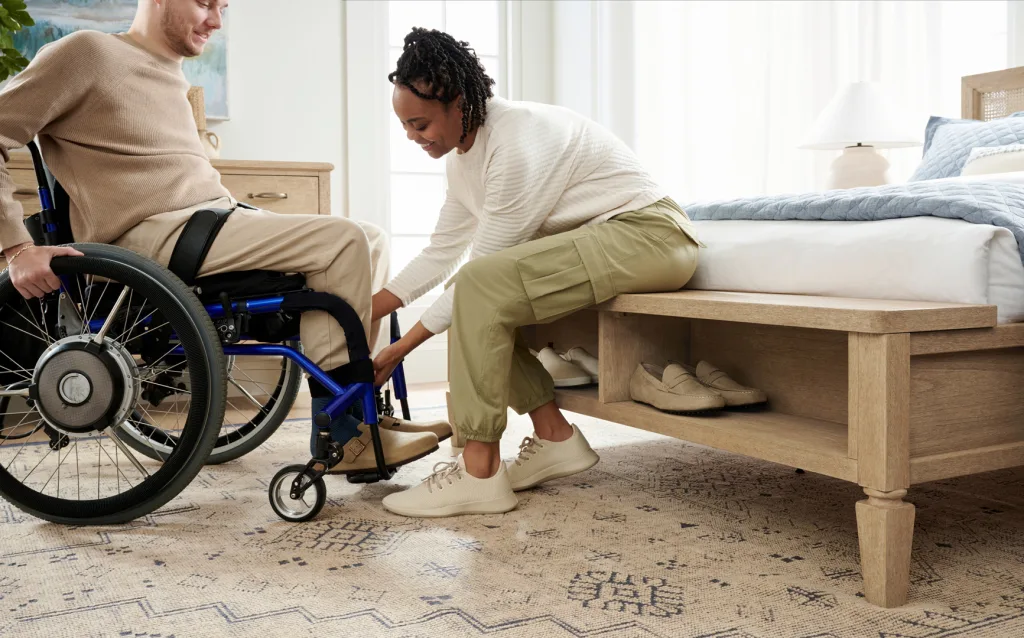
A refined place to sit
Benches are quite popular in bedrooms already. The reason is simple: They provide a place to sit while getting changed. “Sitting on the mattress might not provide the sort of support and stability [people need],” Van Varick says. “But when you have a freestanding bench at the end of a bed . . . its stability is only so good.”
Pottery Barn opted to integrate the bench right into the foot of the bed, making it more stable. This integration also allowed for cutting back on its depth without sacrificing balance—it’s only 11 inches deep. At 19 inches tall, it actually perches the user higher than a standard bench.
“There’s this huge impact that, as soon as your knees go [below] 90 degrees, it takes so much more strength to stand back up,” Van Varick says. “So if you can keep people’s knees at a larger-than-90-degree angle, you really facilitate that egress moment.” It also includes storage for shoes and other items built right in.
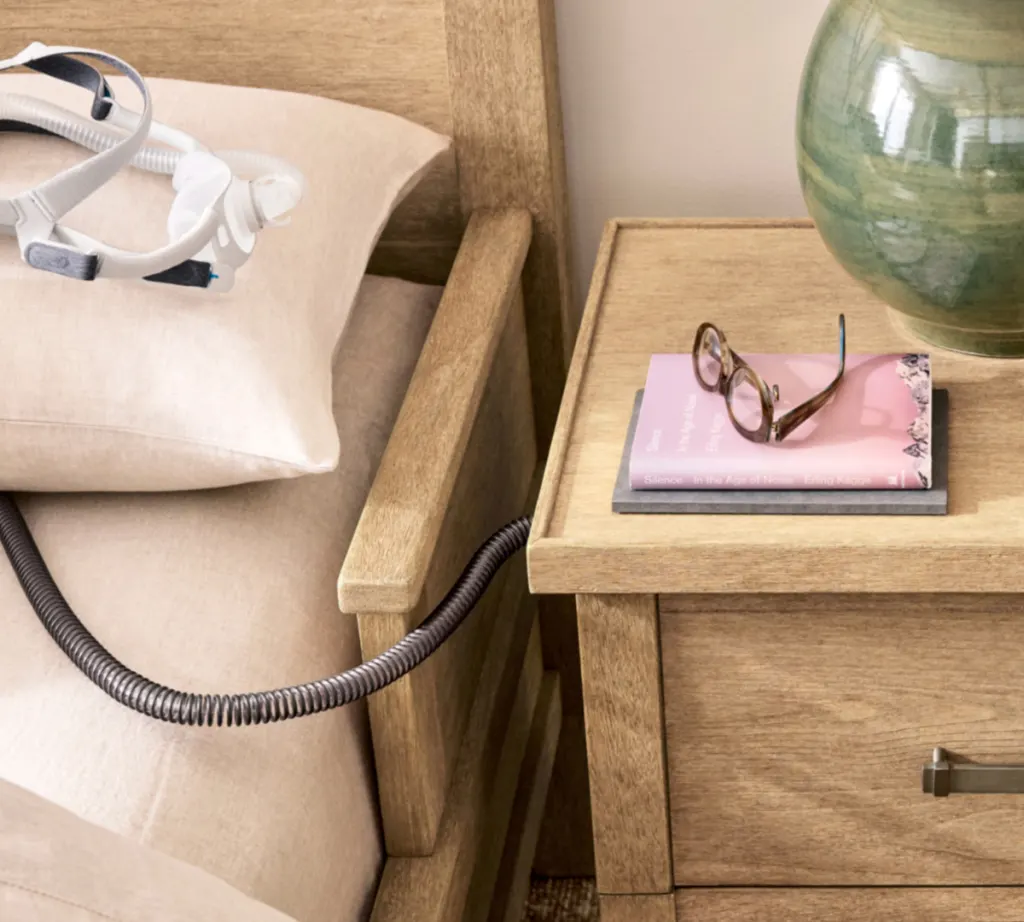
A CPAP-friendly nightstand
“A large number of Americans use CPAP [continuous positive air pressure] devices that live on the nightstand . . . and it’s not something you’re ever gonna see in a catalog spread, right? Because it doesn’t necessarily fit under the column of aspirational,” Van Varick points out.
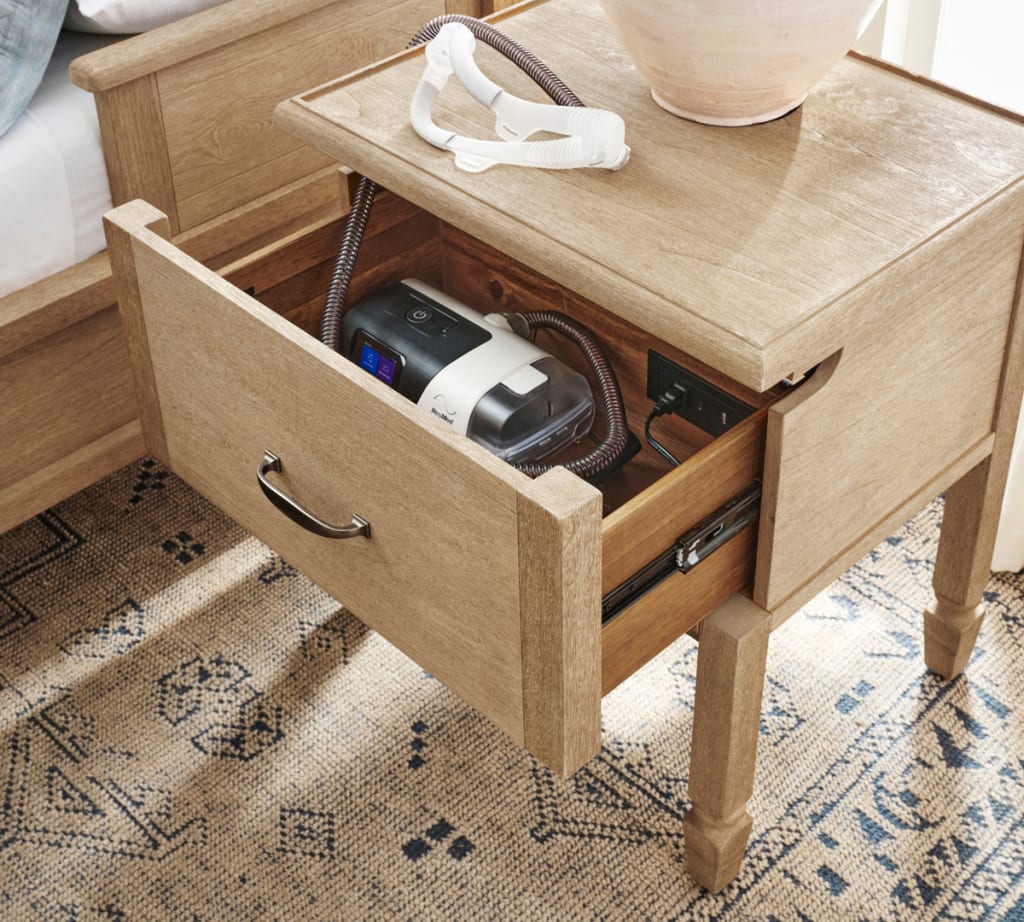
This new nightstand has been designed specifically to fit a CPAP machine inside. It has a deep drawer with an integrated power plug inside. On the sides, it has a small notch cut out just above the drawer where CPAP tubing or even cellphone charging cables can stick out.
“You can thread the hose through there and close the drawer,” Van Varick says. “And when I say ‘thread the hose through,’ it’s not like threading a needle. You just drape the hose over the side of the drawer and close it and it will fit into that notch.”
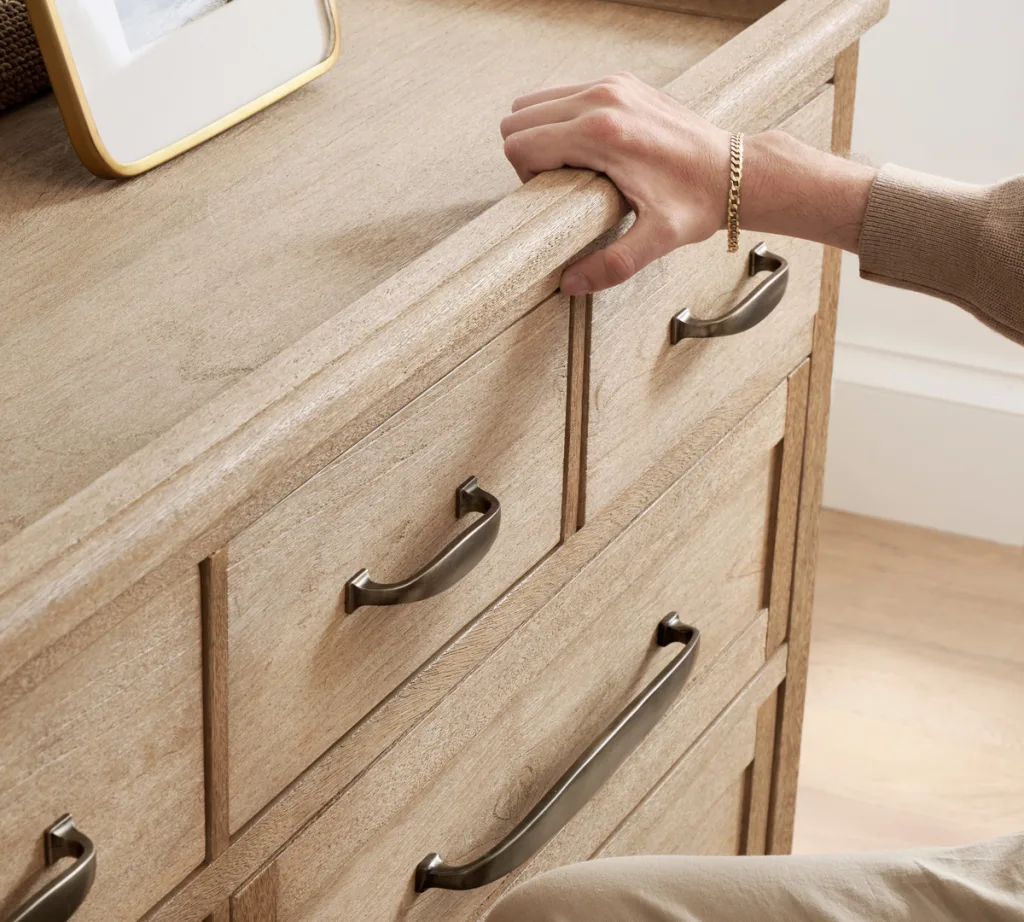
Surfaces that don’t let stuff roll off
When something rolls off a table onto the floor, it’s always a pain. But for someone with mobility issues, it’s an opportunity for a fall.
So Pottery Barn’s new dressers and nightstands have what it calls a “containment lip.” It’s a raised border on the surface of the furniture that stops items from sliding off. But on the dresser the lip is more pronounced, allowing you to grab on while walking by. It’s a small design intervention to enable a known pattern of behavior: that people will often “surf” between their pieces of furniture to remain stable.

A dresser with ground clearance
When Graves became a wheelchair user, he broke his feet a lot, because barriers are everywhere and he couldn’t feel when he crashed into something. This is why the ADA mandates clearances near your feet.
The new Pottery Barn dressers have nine inches of clearance for wheelchair users. The extra lift also means people don’t need to bend down as much to reach lower drawers—or, if they want that space back, they can slide bins underneath.
A comfy chair that bucks midcentury modern trends
Played out or not, midcentury modern furniture has become the de facto style across the U.S. But as Van Varick explains, furniture has been trending lower and lower, with seating that is increasingly more difficult to get out of. It’s hard not to see a correlation.
The new Bradford chair promises to be soft to sit in but easy to escape. It’s fit with higher-density foams, optimized seat height, and depth to keep your knees in a stronger alignment. Armrests extend forward so you can push off the front to get into the “nose over toes” position to stand up. As a small bonus, the Bradford also features risers that blend into the frame and allow for a bit of extra lift on the chair if needed, plus a wood rail on the backrest to make it more “surfable.”
The pieces debut on August 1, with prices ranging from $350 to $2,900. That’s about a $100 to $200 premium over the base versions, which Pottery Barn attributes to extra production work and materials.